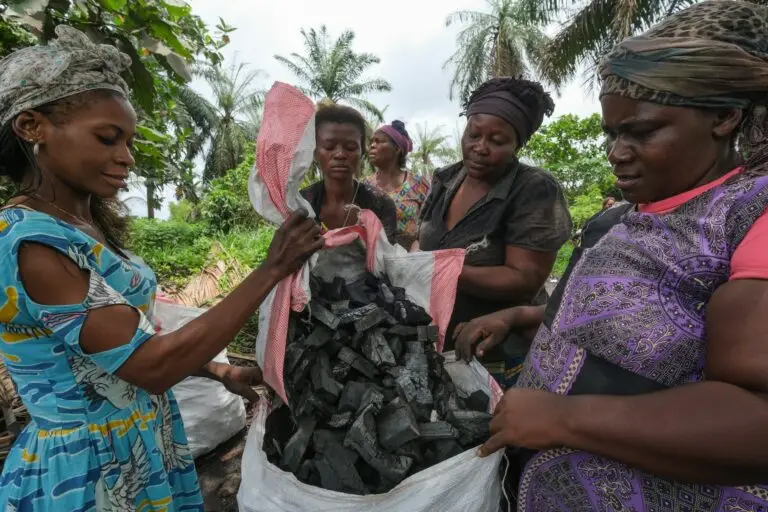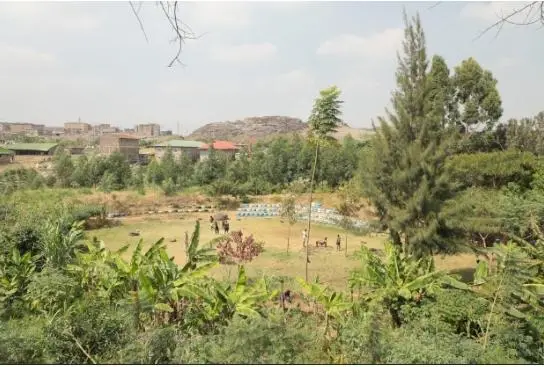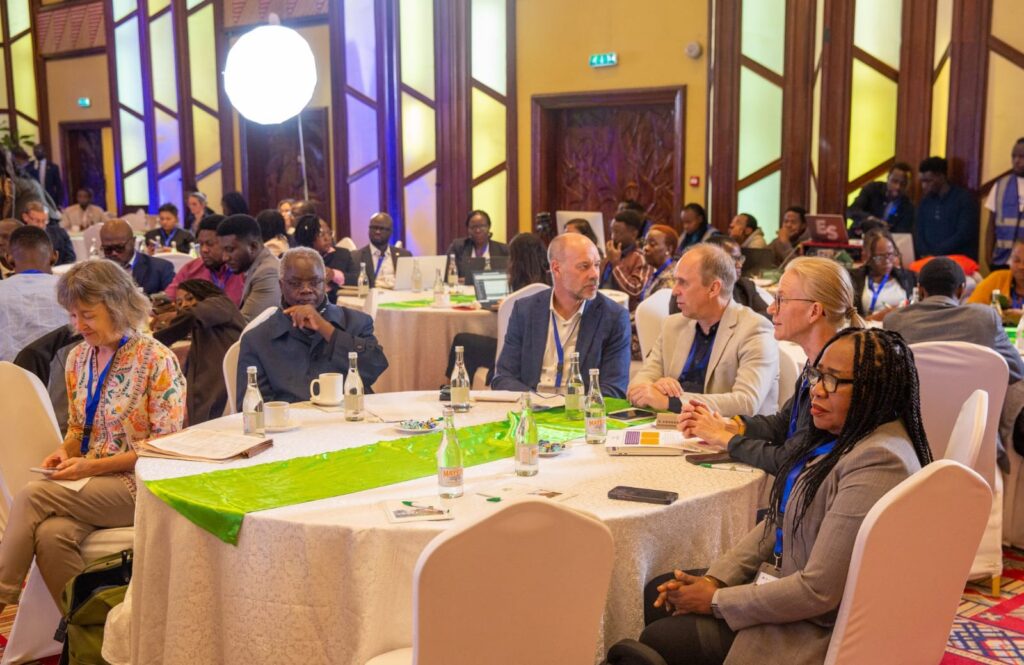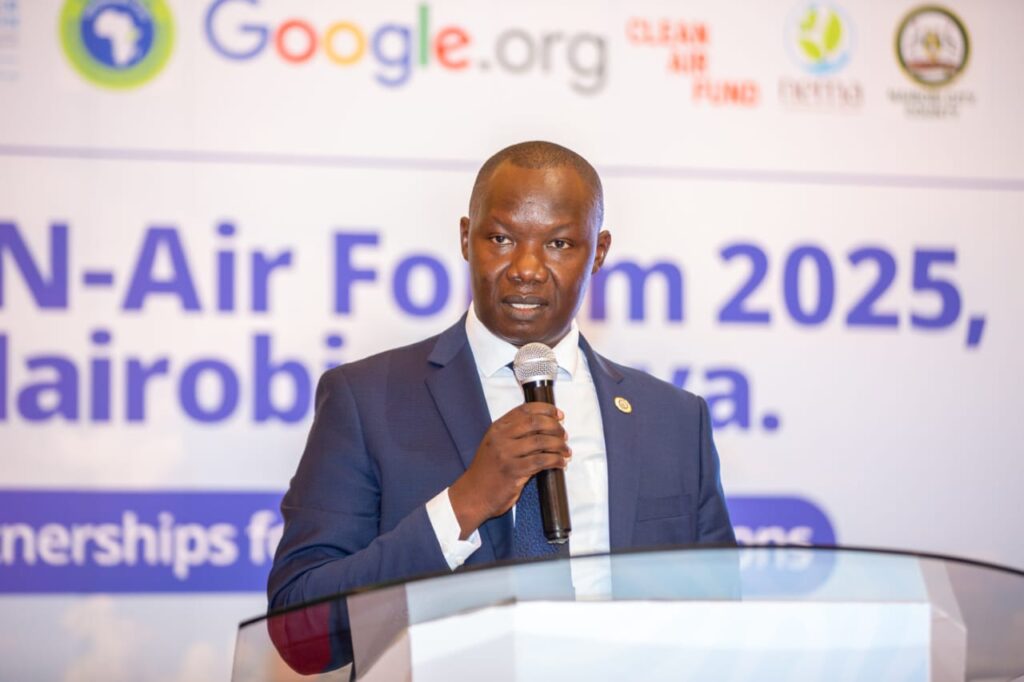
More than 90% of the population in the Democratic Republic of Congo rely on charcoal for their energy needs, driving the pervasive logging of forests across the country
Deep within the war-scarred forests of eastern Democratic Republic of Congo, a silent industry is thriving. Not the sound of gunfire, but the crackle of burning timber. Charcoal production, a lifeline for millions, is fast becoming one of the region’s most destructive forces, feeding a cycle of deforestation, violence, and ecological collapse.
Across the territories of Walikale, Masisi, and Rutshuru, where state presence is often minimal, charcoal has become the most accessible means of survival. Unemployed youth, former farmers, and displaced persons spend weeks felling trees and converting logs into charcoal using traditional kilns. Once processed, the charcoal is packed into heavy sacks and transported on bicycles, sometimes for up to a hundred kilometers, through forests and over rugged hills toward urban markets in Goma, Bukavu, or Uvira. These bicycle convoys, known locally as chukudus, have become a symbol of desperation and resilience.
Joseph, a lean 26-year-old who has been in the trade since his teens, pushes his cargo five days a week. “This is the only work I know,” he says, his voice low and strained. “We survive on this. Without it, we go hungry.” His story is echoed by hundreds of others who have entered the charcoal business not by choice, but by the slow collapse of agriculture, trade, and formal employment in Congo’s eastern provinces.
The widespread reliance on charcoal has brought devastating consequences for the environment. A 2023 survey by local conservationists showed that entire hillsides in parts of Masisi have been stripped bare. In areas bordering Virunga National Park, Africa’s oldest protected park, illegal logging is rampant. Once-dense forests now lie exposed, their biodiversity pushed to the brink and rainfall patterns disrupted. Rivers that once flowed year-round are beginning to dry up seasonally, affecting both farming and fishing communities downstream.
Yet the charcoal crisis is not just about trees. It has become deeply embedded in the region’s broader conflict economy. Militia groups operating in North and South Kivu have tapped into the trade, controlling forest zones, taxing producers, and even running their own kilns. Security analysts in Goma report that at least five known armed groups derive regular income from the charcoal business. Some estimate the trade generates millions of dollars annually, funding the purchase of weapons and the expansion of rebel territories.
A former charcoal burner from Walikale, who fled to Goma after clashes between rival groups, described how armed men often show up unannounced. “They don’t just take money. They demand loyalty. If you refuse to pay or collaborate, they can burn your house or worse.” In many villages, communities are caught in a brutal balance—harvest the forests to survive and risk violence, or resist and starve.
Government efforts to regulate the trade have been largely ineffective. Local environment officers, overwhelmed and often working without proper security or transport, struggle to make arrests or conduct inspections. Even Virunga National Park, with its rangers and global support, has seen limited success. Seizures of illegal charcoal happen, but large-scale enforcement remains risky and corrupt intermediaries often undermine operations.
An official in North Kivu’s environment ministry, speaking anonymously for safety reasons, admitted that control is slipping. “The demand is too high, and alternatives are too expensive. We can’t police every hill or valley. What we need is a shift—economic, not just legal.”
That shift is beginning to take shape, albeit slowly. NGOs and international donors have introduced improved cookstoves that use half the charcoal of traditional models. Others are promoting briquettes made from agricultural waste or investing in solar kits to power cooking and lighting in rural homes. But these solutions face challenges. Adoption is low due to upfront costs, and many families still prefer charcoal’s reliability and heat strength for cooking traditional dishes.
In schools and churches, awareness campaigns are trying to instill long-term change, especially among young people. Tree planting programs, environmental clubs, and community forest management initiatives have gained traction in parts of South Kivu and Ituri. Still, in places where food insecurity and armed conflict dominate daily life, conservation often feels like a distant priority.
“The forest is our bank, our store, our hope,” says a community elder in Lubero. “We know we are cutting too much. But we have no factory, no jobs. What else do you want us to do?”
The Congo Basin, which spans several countries and holds the second-largest rainforest in the world after the Amazon, is vital to global climate stability. Its trees absorb billions of tons of carbon dioxide and support ecosystems that stretch across the continent. Scientists warn that unchecked degradation in eastern Congo could unravel regional rainfall patterns and accelerate global warming.
And yet, the charcoal bags keep arriving in Goma’s markets. Stacked in pyramids under tin roofs, they are sold by the kilo—each sack a product of backbreaking labor and environmental loss. The customers buying them are not villains, just ordinary families cooking meals, boiling water, and trying to get by.
Breaking this cycle will take more than policing or planting trees. It will require peace in conflict zones, investments in clean energy, and viable jobs that don’t depend on the destruction of nature. Until then, the forests of eastern Congo will continue to vanish, tree by tree, flame by flame, all in the name of survival.



